The Monthly Scoop: December's Balance Transfers Update
Not much has changed in the balance transfer space in the past month. Fees are still a thing! But why do some balance transfers have fees? We've seen a lot of changes in balance transfers over the last year. Cards rarely had balance transfer fees attached.
Today, more cards include fees between 1% and 3%. These are added to your account when the transfer is processed by the bank. Yes, it sucks to pay a fee when your goal is to pay off debt, but the upside is the fee is still relatively small. Sometimes only a couple of hundred dollars or less.
Editor’s Pick-of-the-Bunch: Best Balance Transfer Credit Cards for December
If it ain't broke, don't change it. The St.George Vertigo still has a huge balance transfer offer of 24 months at 0% p.a. It does have a 2% fee but is one of the most competitive balance transfer offers out there, especially if you have a large amount to pay off.
The Virgin Money Anytime Rewards Card has a 0% p.a. on balance transfers for 24 months with a low 1% balance transfer fee. This card also allows you to earn 1 Virgin Money Point per $1 spent with no points cap for a low annual fee. As a Visa Platinum card, it also includes benefits like concierge services, discounts with major brands and presale ticket access.
Westpac's Low Rate card is still featuring another whopper of a deal at 0% p.a. for 24 months with a 2% fee. The annual fee is low at $59 per year.
The Virgin Money Velocity Flyer Credit Card offers 0% p.a. on balance transfers for 24 months, with a 1% balance transfer fee. This card also comes with a $129 Virgin Australia Gift Voucher each year. T&Cs apply.
⭐ BT interest fees: It's a good idea to check if the regular 44 or 55 days interest-free on purchases still applies while you have a balance transfer.
T&Cs apply for all card offers so check our review, the PDS and TMD for details.
What is a balance transfer and how does it work?
Here's how a balance transfer works in 3 steps:
- Move credit card, store card or personal loan debt to a new credit card during application (sometimes after)
- Pay 0% interest during the promotional period
- Make a plan to pay off your debt while there are no interest charges
Balance transfers are a truly life-saving feature. If you're feeling the pinch of a credit card balance you can't get on top of, a balance transfer offers a way out.
Let's look at how it might work with an example.
Let's say Lisa has $5025 remaining on a credit card. Here's what she pays:
- Minimum monthly payment: $51
- Interest added at 20.24%: $84.27
As you can see, Lisa isn't paying off her debt anytime soon. Instead, she decides to apply for a card with a 0% balance transfer offer for 18 months.
She fills in the transfer information during the application, and her existing debt is moved to her new card.
Over the next 18 months, Lisa makes a plan to pay off her card in full. With no interest being added, she's able to divide her debt by 18 and pay it off at $280 per month.
Pros and cons of a balance transfer credit card
Pros
- Get relief from interest charges on your debt
- Make a plan to pay off your debt before the interest-free period ends
- A new card may have perks you can use to save money and pay off your debt faster
Cons
- Any debt left after the interest-free period is charged a high interest rate
- You may need to pay a 1 - 3% transfer fee (many have no fees)
- Your credit card limit will determine how much you can transfer
Using balance transfers effectively
Balance transfer offers are a fantastic tool for getting a leg-up on your debt, but there are a few caveats worth mentioning.
❌You may pay interest on new purchases: Most balance transfer credit cards won’t offer interest free days on your other spending. That means if you use the card to buy groceries or a coffee, you’re going to pay the card’s purchase rate on that transaction immediately.
You may want to consider having one low interest rate card for everyday spending, and one for paying down your balance on a balance transfer card. Or, close your old credit card account until you’re on top of your debt.
❌A transfer isn't a debt-storage facility: A balance transfer card isn’t a get-out-of-jail-free card, either. You’ll still have to pay minimums each statement period, and you’ll need a plan for paying down your debt long term.
If you have a leftover balance at the end of the introductory period, you can consider applying for another balance transfer card to give you time to pay it off – but be warned, applying for too many cards too quickly can hurt your credit score, making it harder to get a new card.
How to compare and choose a balance transfer card
It might feel a bit overwhelming to wade through so many balance transfer cards. Here are the main factors to look at.
✔ The length of the interest-free period.
You might need to do some calculation to figure out the best length for you, based on your current debt. Divide your debt by the number of months to work out if you can realistically make the monthly payments and be debt-free at the end of the interest-free period.
✔ Any balance transfer fees that apply.
Many card providers don't charge a transfer fee, but some may charge 1-3% of the amount being transferred. The fee is added to your transfer to be paid off with the rest of your debt. You'll need to weigh up if the fee is still worth it when compared to the annual fee and any other money-saving perks on the card, such as cashback.
✔ The annual fee.
Generally, the more fancy the card, the higher the annual fee. High fees are money you can't use to repay your debt. So, decide whether other extras on the card are worth the annual fee, and if not, choose a more basic card with a lower fee.
✔ The balance transfer limit.
It's likely there will be a cap on the amount you can transfer from your existing credit card or personal loan. It's usually expressed as a percentage of your approved credit limit: for instance, if you’re approved for a $10,000 credit limit with a balance transfer limit of 90%, you may transfer up to $9,000 as a balance transfer.
✔ The revert rate.
The 'revert rate' is the interest rate you'll be charged on any leftover debt once the interest-free period is over. It's usually based on the cash advance rate, which is higher than the normal everyday purchase rate. If you think you might have a balance remaining at the end of the intro period, the card’s revert rate is important. The higher the rate, the more you’ll pay in interest.
How do you organise a balance transfer?
Luckily, your new provider will do most of the legwork when you request a balance transfer. However, you’ll need to take the first steps so your new credit card does the job you want it to do: help you get ahead of your debt. Read my guide to key balance transfer rules before you get started.
1. Compare all the balance transfer cards and their offers.
Use CreditCard.com.au to compare your options, using the toggles to order them by provider, purchase rate, balance transfer revert rate, annual fee and the summary of your potential savings.
Pay close attention to the card’s balance transfer rate and revert rate, how long the introductory period lasts, and whether there’s a limit placed on the amount transferred. Be sure to take into account the card’s annual fees, and check whether there is a balance transfer fee.
If you plan on keeping the card in the long run, it’s a good idea to compare other factors, such as the card’s purchase rate, and the various features on offer.
2. Confirm the amount owing on your existing card
Before you apply, double-check the amount you want to transfer to the new balance transfer card, especially if you are transferring a number of balances from different cards or lenders. Depending on the card you choose, you may be limited in the amount you can transfer. Transfer limits are usually expressed as a percentage of your approved credit limit, for example, 80% or 90%.
3. Submit your application
When you’re ready to apply, simply click through to the card provider’s website to begin your application. Online applications usually take around 10 minutes to complete. You’ll be asked to provide details about your income, assets, debts and other relevant information.
4. Request the balance transfer
The process for requesting a balance transfer can vary. Some providers ask you to provide details of the transfer when you apply for the card, while others allow you to request the transfer after your application has been approved. For those balance transfer requests, you typically have a limited time to apply, either using a paper application or online banking.
5. Activate the card and confirm the transfer
Once you’ve been approved for your new card, you’ll need to activate it (the instructions will come with it), and then confirm the transfer has been made. After you’ve checked there are no new transactions pending on your old card, you can close that account if you don’t plan on using it anymore.
What fees should I expect to pay on a balance transfer?
The first thing to consider when comparing balance transfer offers, is any fees you might have to pay. Doing this should make it easier for you to work out how much the offer could save you overall, and whether you could save more with a different card.
One of the most important fees to look out for is the balance transfer fee. Not all balance transfer cards charge balance transfer fees, so if it’s not obvious, check the fine print to make sure. A balance transfer fee may be charged as a flat rate, but it’s more commonly charged as a percentage of the amount you're transferring.
So, if you were to transfer $5,000 with a balance transfer fee of 2%, your fee would come to $100, and you would have a total of $5,100 to pay back overall. It’s worth mentioning the promotional rate of interest may not apply to your balance transfer fee, and it might be charged at the revert rate. Check with the card provider if you’re unsure.
How many debts can I transfer to my new card?
The number of balances you can transfer onto a new balance transfer card varies, so it’s (always!) a good idea to read the small print before you apply. If you can’t find a conclusive answer, call the provider to check.
You may find some providers allow for the transfer of a number of balances, while other providers only allow one transfer. You may also want to check where you can transfer balances from. Providers don’t usually transfer balances from other credit cards within their network, but you should be able to transfer from other providers’ credit cards, and in some cases, from store cards, personal loans and other forms of credit.
At the time of writing, these providers allow you to transfer personal loans to a balance transfer credit card:
Can I transfer my debt to the same bank as my old card?
You may find you can’t transfer a balance from one card provider to another, especially if they’re within the same financial group.
Balance transfers credit cards for existing customers:
| American Express | No balance transfers from other American Express accounts. |
| ANZ | No balance transfers from other ANZ accounts. |
| Bank of Melbourne | No balance transfers from BankSA, St.George or Bank of Melbourne credit cards as all of these banks are under the Westpac Banking Corporation. Balance transfers from Westpac are permitted. |
| BankSA | No balance transfers from BankSA, St.George or Bank of Melbourne credit cards as all of these banks are under the Westpac Banking Corporation. Balance transfers from Westpac are permitted. |
| Bankwest | No balance transfers from other Bankwest accounts. While Bankwest is a division of CommBank, you can still request a balance transfer from a CommBank credit card to Bankwest. |
| BOQ | No balance transfers from other BOQ credit cards. |
| Commonwealth Bank | No balance transfers from other CommBank accounts. Balance transfers between CommBank and Bankwest are permitted. |
| Coles | No balance transfers from other Coles credit cards. Can transfer personal loans, conditions apply. |
| Kogan | No balance transfers from other accounts issued by Kogan Money, Bank of Queensland, NAB, and Qantas Money. You can transfer account balances from credit cards, personal loans, and other types of unsecured credit. |
| Latitude Financial Services | No balance transfers from other Latitude accounts or its associated entities, including Gem Visa, 28 Degrees Platinum Mastercard, GO Mastercard, and Latitude Infinity. |
| Macquarie Bank | No balance transfers from other accounts issued by Macquarie Bank. This includes other Macquarie and Card Services accounts. |
| Myer | No balance transfers from Macquarie Bank or Card Services accounts. |
| NAB | No balance transfers from other NAB accounts. |
| St.George | No balance transfers from BankSA, St.George or Bank of Melbourne credit cards as all of these banks are under the Westpac Banking Corporation. Balance transfers from Westpac are permitted. |
| Suncorp Bank | No balance transfers from other Suncorp Bank accounts, including IMB and Virgin Money. |
| Virgin Money | No balance transfers from other Virgin Money credit cards. Can transfer personal loans, conditions apply. |
| Westpac | No balance transfers from other Westpac accounts. Balance transfers from BankSA, St.George or Bank of Melbourne credit cards are permitted. |
| Woolworths | No balance transfers from other Woolworths credit cards, Macquarie or Card Services accounts. |
Do I have to cancel my old card?
You can choose whether you keep the old card or cancel it. Remember you may have to pay an annual fee. If you think you might be tempted to spend on the old card, you may be better off closing the account to focus on paying the balance transfer debt.
Are there credit cards with no balance transfer fee?
There's still several credit cards in market that are offering 0% p.a. introductory offers on balance transfers. This means you won't pay a fee (sometimes 2-5%) to transfer your balance from another card. These cards will have a limited-time promotional period where your interest rate is 0% p.a. on transferred balances. This allows you to chip away at the debt without accruing any interest during that period. However, it's super important to check the T&Cs of each card. Some may have other fees or charges associated like a higher interest rate after the balance transfer period ends.
Can I make new purchases on my balance transfer card?
Yes, you can, but you’ll likely pay interest on those purchases right away. You can spend up to your credit limit, but having a balance transfer means you won’t get any interest free days on your purchases.
Credit card interest is usually calculated daily, which means you’ll be racking up interest from the moment you make a transaction on the card. If paying down debt is your goal, you may need a low interest rate card to make everyday purchases on, or forego using a credit card until your balance is cleared.
Common Mistakes with Balance Transfer Credit Cards
Balance transfer offers can be a lifesaver, but you’ll need to be aware of some easy mistakes to make after you’ve completed the transfer.
Mistake #1. Thinking that 0% interest means no payments
Even with a 0% p.a. balance transfer offer, you’ll need to make minimum repayments on the card each statement period. If you want to pay off your transferred balance within the introductory period, it’s a good idea to set up a repayment plan, where you pay off as much as you can afford each month.
Mistake #2. Only paying minimum repayments
Making only the minimum repayments on any credit card isn’t a recommended practice because it will massively bump up the amount you owe long term. Check your credit card statement - it tells you how long it’ll take to pay off your debt making only the minimum repayments. By only paying the minimum, you’ll stay in debt far longer and pay a lot more in interest, even with a balance transfer offer.
Mistake #3. Making new purchases on your card
This applies to both your new card and your old card. When you have a balance transfer offer, you should focus on paying your transferred balance off within the introductory period. If you start spending on either card, you have even more to pay off month-to-month.
Worse still, any repayments on your new card automatically go towards paying off the balance with the highest interest first. That means if you’re spending on your balance transfer card, any payments you make might be paying off your new balance while the transferred balance remains untouched.
Note: even if the credit card says it offers interest free days, those won’t apply if you have a balance transfer. When you’ve paid the balance transfer, your interest free days will kick in.
Mistake #4. Not cancelling your old card
When you transfer a balance from an old card, it can be tempting to spend. After all, now you’ve got a credit card with $0 balance and a full credit limit available to you. If you’re going to be tempted to spend, consider closing your old card, and focusing on paying down your balance transfer.
Is it a good idea to do a balance transfer?
If you’re struggling to pay down existing debt, a balance transfer can help you save money on your interest repayments. It's important to look at your repayments each month and work out what you can afford to pay down on your debt to find a balance transfer credit card that works for you and your circumstances.
Used well, a balance transfer offer can help you get on top of money you owe on your credit card.
Are balance transfers bad for your credit?
Applying for a balance transfer credit card won’t affect your score any more than a regular application. It’ll show up as a standard hard enquiry on your credit file, and may lower your score as is normal for loan and credit card applications.
How many times can you do a balance transfer on a credit card?
Each credit card application puts a hard enquiry on your credit file, so doing too many in a short period of time is detrimental. If you haven't paid off your balance at the end of the period, you can consider doing another balance transfer. As long as you meet the application requirements and can make the repayments, it's a good time to start comparing.


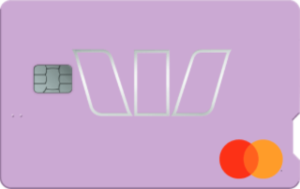





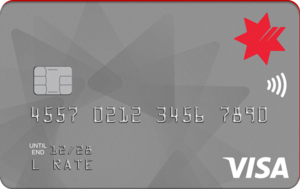
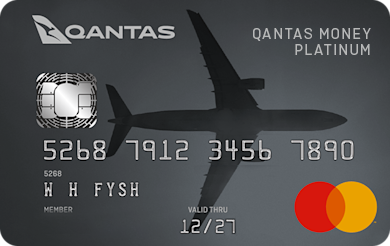
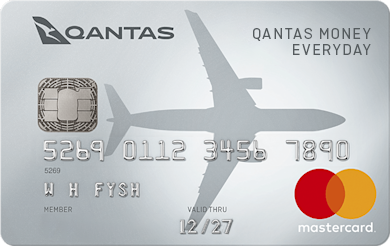
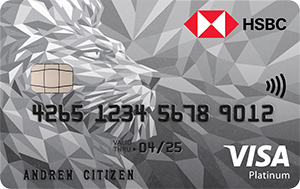
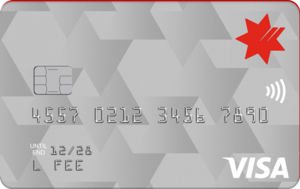








Matt
12 November 2025Pauline
19 November 2025haydee florendo
11 November 2025Pauline
13 November 2025Tony
17 October 2025Pauline
21 October 2025Jessica
10 January 2025Pauline
16 January 2025